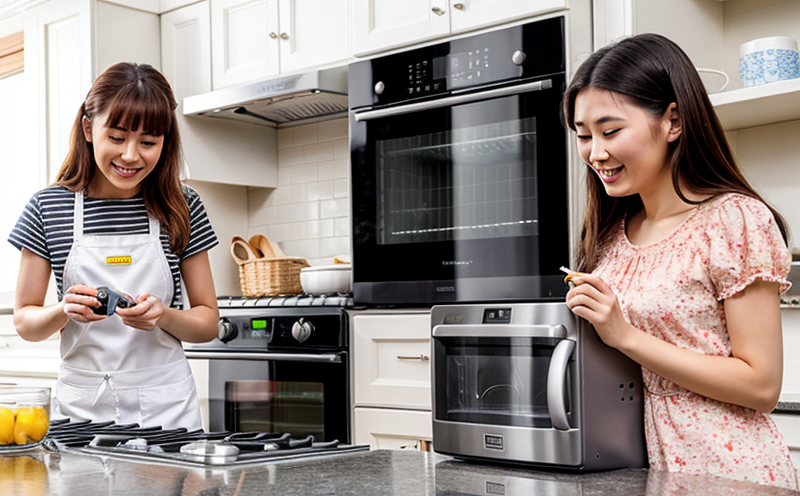UL 1431 Personal Hygiene Appliance Safety Testing
The UL 1431 standard is a critical benchmark in the safety testing of personal hygiene appliances. Compliance with this standard ensures that products are designed, manufactured, and tested to meet rigorous safety requirements, thereby protecting consumers from potential hazards associated with electrical malfunctions.
UL 1431 addresses the specific safety concerns of personal hygiene appliances such as hair dryers, shavers, toothbrush chargers, and other devices used in close proximity to water. The standard includes stringent requirements aimed at preventing shocks, fires, and other potential dangers that could arise from improper design or manufacturing processes.
The testing process involves a series of comprehensive checks designed to identify any weaknesses in the product's structure or functionality that might compromise safety. This includes electrical safety tests, durability assessments, and verification of labeling accuracy. These tests are conducted using state-of-the-art equipment and methodologies to ensure reliability and precision.
For quality managers and compliance officers, adhering to UL 1431 provides a roadmap for ensuring product integrity and enhancing brand reputation through consistent adherence to safety standards. R&D engineers can leverage this service to innovate while staying within the bounds of safety regulations. Procurement teams benefit from knowing that suppliers are meeting these stringent requirements.
In summary, compliance with UL 1431 is not just a regulatory requirement but an essential step in safeguarding consumer health and well-being. By adhering to this standard, manufacturers can demonstrate their commitment to quality and safety, thereby gaining a competitive edge in the market.
Scope and Methodology
The UL 1431 Personal Hygiene Appliance Safety Testing is designed to ensure that products meet specific electrical safety requirements. The scope of this testing encompasses various aspects critical for consumer protection, including:
| Aspect | Description |
|---|---|
| Electrical Safety | Evaluation of the product's ability to prevent shock and fire hazards. |
| Durability | Testing for long-term performance under normal use conditions. |
| Labeling Accuracy | Verification that all labeling complies with UL standards. |
The methodology involves a series of tests, each designed to address specific safety concerns. These tests are conducted using advanced equipment and methodologies:
| Test Type | Description |
|---|---|
| Burn Test | Evaluates the product's resistance to overheating. |
| Moisture Resistance Test | Determines the appliance's ability to withstand exposure to water or moisture. |
| Vibration Test | Assesses durability under conditions of repeated use and handling. |
The testing process is meticulous, ensuring that every product undergoes rigorous scrutiny before being deemed safe for consumer use. This comprehensive approach not only meets but exceeds regulatory requirements, providing peace of mind to consumers and stakeholders alike.
Environmental and Sustainability Contributions
The UL 1431 Personal Hygiene Appliance Safety Testing also contributes positively to environmental sustainability. By ensuring that products are safe, durable, and energy-efficient, this testing helps reduce waste and promote the use of sustainable materials.
Durable products mean less frequent replacements, reducing the demand for new resources and minimizing electronic waste. The testing process ensures that appliances meet strict efficiency standards, which can lead to significant reductions in energy consumption over their lifetimes. This not only benefits consumers but also supports broader sustainability goals within the industry.
Moreover, compliance with UL 1431 encourages manufacturers to adopt sustainable practices throughout the product lifecycle. From design and manufacturing to disposal, every stage is influenced by a commitment to environmental responsibility. By adhering to this standard, companies can contribute to a more sustainable future while maintaining high standards of safety.
Ultimately, the UL 1431 Personal Hygiene Appliance Safety Testing serves as a model for responsible product development and production, fostering an industry culture that values both consumer safety and environmental stewardship.
Competitive Advantage and Market Impact
Compliance with UL 1431 offers significant competitive advantages in the marketplace. By ensuring that products meet the highest safety standards, manufacturers can build trust and confidence among consumers. This trust translates into increased market share and customer loyalty.
The rigorous testing process not only ensures product safety but also enhances brand reputation. Consumers are more likely to choose brands that prioritize safety and quality, giving companies a competitive edge in an increasingly crowded market. Additionally, compliance with UL 1431 can open doors to international markets where stringent safety standards are required.
From a strategic perspective, adherence to this standard positions manufacturers as leaders in product safety and innovation. This positioning can lead to partnerships with other industry leaders, fostering collaboration and shared best practices. Furthermore, it provides a foundation for continuous improvement and adaptation to evolving market demands.
In summary, the UL 1431 Personal Hygiene Appliance Safety Testing is more than just a compliance requirement; it is a strategic tool that drives competitive advantage and market impact. By embracing this standard, manufacturers can set themselves apart in a crowded industry while contributing to consumer safety and environmental sustainability.





